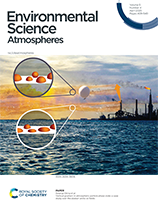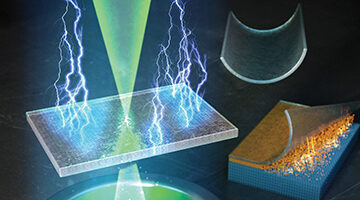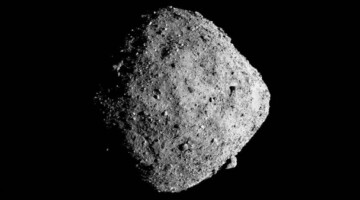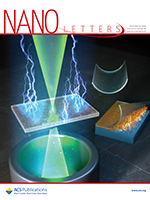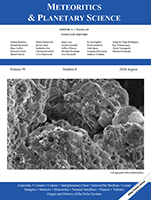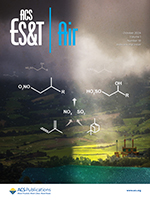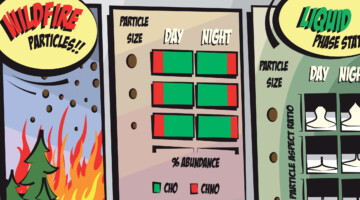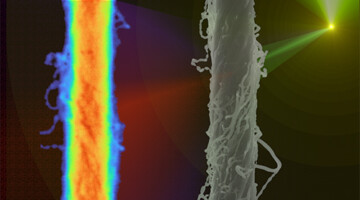Researchers identified nitrogen-rich compounds in samples from the asteroid Bennu, returned to Earth by NASA’s OSIRIS-REx mission. The results support the idea that asteroids like Bennu may have delivered the essential chemical building blocks of life to Earth in the distant past. Read more »![]()
![]()
ALS Work Using STXM
Scanning transmission x-ray microscopy (STXM) generates microscopic images of a thin section of specimen by raster-scanning it in a focused x-ray beam. The flux of transmitted x-rays is measured to obtain the image intensity. By holding the beam at a microscopic region of interest on the sample while the photon energy is scanned, chemically sensitive x-ray absorption spectra can be measured at that specific location (spectromicroscopy).
Vertical gradient in atmospheric particle phase state: a case study over the alaskan arctic oil fields
Integrating chemical composition and phase state measurements demonstrated that carbonaceous-rich and organic-dominated particles exhibited higher viscosities, while inorganic-rich particles displayed lower viscosities. This finding establishes an association between composition and phase state, offering critical insights into the vertical stratification of Arctic particles. Read more »
A Clearer Look at Lithium-Ion Traffic Jams in Batteries
By directly visualizing the uneven insertion of lithium ions into electrodes with well-defined crystal orientations, researchers learned why fast charging decreases battery lifespan and performance. The work could provide insights into better battery utilization and help investigations of the surface insertion reaction during fast charging. Read more »![]()
![]()
Bennu’s Ancient Brine Sheds Light on Recipe for Life
Researchers traced the evolution of minerals (“salts”) in an ancient brine, as recorded in samples from the asteroid Bennu, returned to Earth by NASA’s OSIRIS-REx mission. The results support the idea that asteroids like Bennu may have delivered water and essential chemical building blocks of life to Earth in the distant past. Read more »![]()
![]()
Berkeley Lab Helps Explore Mysteries of Asteroid Bennu
The Advanced Light Source and Molecular Foundry provided powerful tools to study asteroid samples returned by NASA’s OSIRIS-REx mission to the asteroid Bennu. Researchers found a telltale set of salts formed by evaporation that illuminate Bennu’s watery past. Read more »
Elucidating Heterogeneous Li Insertion Using Single-Crystalline and Freestanding Layered Oxide Thin Film
The nanoscale surface insertion of lithium in a single-crystalline and freestanding LiNi1/3Mn1/3Co1/3O2 thin film is elucidated using in situ scanning transmission x-ray microscopy. The realization of advanced analysis through freestanding thin films is expected to be applicable to other systems subjected to external stimuli, such as hydrogen storage alloys, in the field of materials science. Read more »
Electron microscopy observations of the diversity of Ryugu organic matter and its relationship to minerals at the micro- to nano-scale
The work reported here addresses the question of how the organic matter (OM) in the Hayabusa2 samples compares and contrasts with OM from primitive carbonaceous chondrites, as observed primarily by transmission electron microscopy in concert with other microanalytical techniques. Read more »
Chemical Insights into the Molecular Composition of Organic Aerosols in the Urban Region of Houston, Texas
This study illustrates the molecular composition of organic aerosols collected in the Houston, Texas, region using direct sampling interfaced with high-resolution mass spectrometry. This study highlights the episodic prevalence and day/nighttime distribution of organosulfates and organonitrates enriched species. Read more »
Case Study of Aerosol Particles Influenced by Wildfire
Researchers studied atmospheric aerosols influenced by wildfires in the Pacific Northwest. They examined the connection between particle size, chemical composition, and phase state, in particles collected during the day and at night. The information is important for modeling the effects of wildfire smoke on atmospheric properties. Read more »
How Processing Affects Structure in Composite Nanotube Yarns
Using the ALS, researchers found quantitative correlations between processing parameters and the structure of ultrafine, polymer-reinforced carbon-nanotube fibers. The work will facilitate the production of high-strength materials, including those needed for positioning target capsules for fusion research at the National Ignition Facility. Read more »![]()
![]()
- 1
- 2
- 3
- …
- 6
- Next Page »

